CHOKE COLLARS FOR OBEDIENCE:
There are many different styles of choke collars on the market for both obedience and conformation showing. The ones depicted here are not meant to be all inclusive, but rather a fair sampling of the various types for obedience only. Show collars are listed under SHOW EQUIPMENT. Notes on ones shown are listed below each photo, and are based entirely on obedience experiences.
We do not use, nor condone the use of prong, or pinch collars for any reason. Generations of dogs have been trained without the use of prong and pinch collars with overwhelming success. It is our opinion that suggested use of these items is an indication of the inability of the trainer, to properly induce the dog to perform without these aids, which inflict unnecessary pain on the animal. Prong collars are not as nerve invasive as pinch collars, but do apply enormous amounts of pressure in specific, localized areas, which in turn can unnecessarily bruise. Nylon show collars are not advisable due to the need for inordinate amounts of force to maintain control.
Some choke chain collars are better than others for various reasons. For the purposes of obedience, you should be looking for a collar that slides through the ring loop with great ease, both in the pulling motion and the return slide. Many designs give the appearance of easy slide, but fall short. The other specifics to look for are sound, strength, flexibility, control, and hair grab.
SOUND: A collar should not make noise on either stroke. Some sound cannot be avoided, but the least amount is desirable. Dogs become accustomed to the sound of the collars, and can start to react before it ever tightens up on the neck. This at first glance would seem to be a positive, and in reality is. The potential for problems down the road are evident however, when the dog is being trained off lead, and the sound is obvious by it's absence. The dog will know for sure that the leash is not connected, and this can lead to problems, especially at the beginning of off-lead work training. Collars numbered 2 / & 3 below have this problem.
HAIR GRAB: Never use a collar that grabs or tugs at the hair. Some collars are notorious for pulling hair out and / or rubbing areas around the neck into obscurity. Collar 3 has this problem.
STRENGTH:The collar must be strong enough to command control without breaking. Durability is essential, with the narrowest links possible. Links should be inspected for weld and connection integrity before purchase, and on a regular basis before using. All collars below are acceptable in strength. Number 2 is the weakest of all shown.
CONTROL: The collar must give maximum control for the least amount of force. This requires a thinner linked collar, so the pulling effect penetrates the thick hair, instead of crushing and matting it under the links. Collar number 1 is too large for proper control.
FLEXIBILITY: The links must be designed so as to allow the collar to fold through the rings with relative ease. All collars shown provide adequate flexibility.
For all these features, I recommend the Jeweler's link collar shown below. This collar is used extensively in the conformation ring as well. It is a fallacy that the larger linked collar is the best. Many use this collar because it is beefy in appearance, and gives the false security of control. Remember, the larger the link, the more force is needed, along with exertion. You can get double the results for half the energy and wear on your dog with just choosing the proper collar. One of the most important pieces of equipment to get right the first time.
1 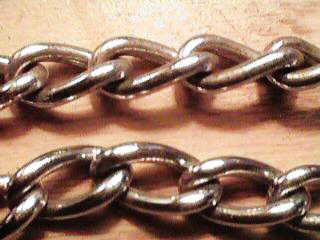 |
2 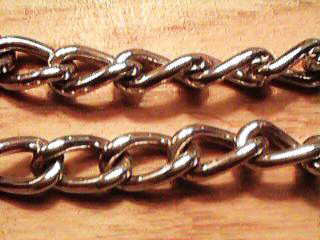 |
|
| Links, too large, grabs on each link. | Slides easy, but is noisy on return stroke. |
3 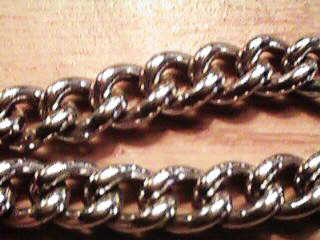 |
4 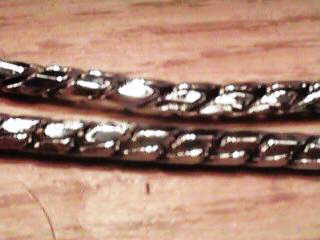 |
|
| Too rough, bumps & grabs. | Jeweler's link excellent slide & return. |
HOW TO USE THE COLLAR:
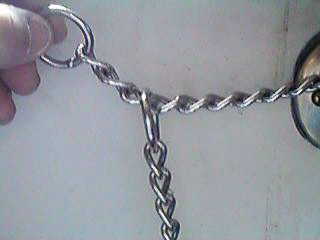 |
| Links pull through at top. CORRECT! |
In the photo above, the chain is pulled through correctly. When facing your dog, the inner chain should pull through the ring as shown. This will allow the chain to release when tension is let go. The photo on the right shows the incorrect way to apply the collar. Note the inner chain slides through the ring at the bottom of the dog's neck. This application will pull the collar tight and not allow it to release when let go, thus continuing the choking effect at all times.
Also, note in the photo, that the chain is hung up on a link. This is collar number 1 from above, and shows the grabbing effect of the links when too large a link is used. Great for going for a walk, but not to train.